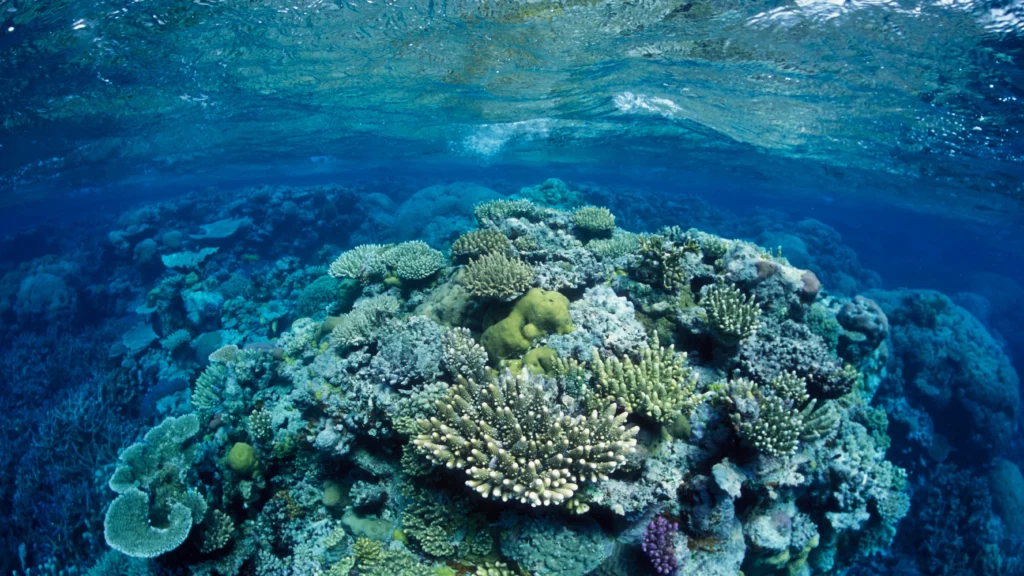Despite all the clever people declaring that coral reefs were bleaching and dying off due to global warming, the available data shows the picture is not nearly so gloomy. Rather, a new report by Australian marine scientist Peter Ridd, famously fired from James Cook University for criticizing the sloppy work of some of his colleagues who had insisted the Great Barrier Reef was rapidly dying off due to warming of the oceans, confirms that the available data shows most coral reefs around the world are holding their own just fine. It’s especially true on the Great Barrier Reef where there is now twice as much coral as there was in 2011 despite multiple coral bleaching events. Good news for the corals, although unfortunately for Ridd being scientifically correct but politically incorrect is career suicide in modern academia.
Ridd’s report provides a great deal of interesting background about coral reefs. For instance, the colorful stuff near the ocean surface is growing upon a giant pile of dead coral fragments. And there is so much of the stuff that no one can really measure it. The Great Barrier Reef is larger than Germany and as long as California, and since it is underwater you can immediately understand why there isn’t much precise data on the historical amount of coral cover.
Surveys are done by divers but even after spending considerable time and resources they can only inspect about 0.003% of the total surface area. And that’s the best of the monitoring programs. In the other major coral habitats around the world the monitoring is even more sporadic. But based on the available data, Ridd shows a number of key patterns. First, corals that undergo a bleaching event (regardless of the cause, which can include warming or cooling) recover relatively quickly.
Bleaching happens when the coral polyps, as a defence mechanism when stressed, expel the colorful algae that live inside them. But it rarely implies the coral dies. Instead, once recovered from the stressor they open their doors and algae move back in.
Ridd also shows that measurements from individual reefs show considerable variability of coverage over time. Therefore it would take many decades’ worth of data to understand natural variability, but few reefs have anything like that much data. From one decade to the next it can appear that a reef has experienced enormous die-off, only to come roaring back. This happened on the Great Barrier Reef when it shrank steadily from 2000 to 2015, leading many scientists to hit the panic button and declare the coral done for. Then starting in 2016 the dang stuff came back like billy-o despite warming waters due to a strong El Niño and four mass bleaching events.
Ridd observes that coral reefs are “a tool for the merchants of doom” since coral bleaching and die-offs are visually spectacular and upsetting. But if they were as delicate as people make out they never would have survived as long as they did. They can certainly be damaged, especially by pollution and overfishing. As long as these problems can be managed, he argues “decades of research have shown the outlook for coral reef is extremely encouraging.”



So
I think the issue is that only 0.003% gets looked at. I think any belief that the coral cover was significantly down a decade ago is simply another guess.
Patrick Moore’s law about emergencies where people cannot see them.
Next up, emperor penguins
CDN routinely mocks the spurious precision of the alarmist claims, yet here we have, "...they can only inspect about 0.003%..." Hmmm.